126 items found: Search results for "rest" in all categories x


November 1, 2015 | Microservices
To use or not to use hypermedia (HATEOAS) in a REST API, to attain the Level 3 of the famous Richardson Maturity Model. This is one of the most discussed subjects about API design.
The many objections make sense (“Why I hate HATEOAS“, “More objections to HATEOAS“…). The goal of having fully dynamic, auto-discovering clients is still unrealistic (…waiting for AI client libraries).
However, there are good examples of successful HATEOAS API. Among them, PayPal.


August 12, 2015 | Microservices
Over the last few months one of my main projects at OpenCredo has involved creating various microservices which are interacted with via REST. We’ve been working with a relatively rich domain model, which in turn has presented a lot of challenges in how to design our various resources. This blog post aims to summarise various techniques and practices which I’ve found helpful in overcoming these challenges.
July 28, 2015 | Microservices
Recently I co-presented a talk at Goto Amsterdam on lessons learnt whilst developing with a Microservices architecture; one being the importance of defining and documenting your API contracts as early as possible in the development cycle. During the talk I mentioned a few API documentation tools that I’d used and, based on feedback and questions from attendees, I realised that this topic merited a blog post. So, the purpose of this is to introduce 5 tools which help with designing, testing and documenting APIs.


February 22, 2024 | Blog, Kafka
Check out Peter Vegh’s latest blog where he explores a bespoke Kafka backup framework, discussing the approach, architecture and design process to implement and deliver the solution.
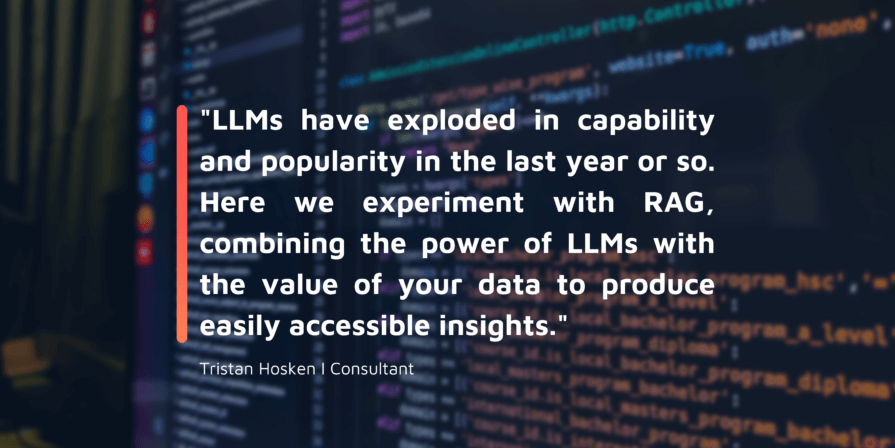
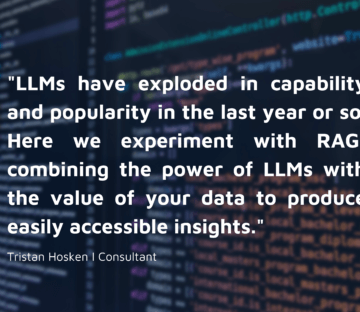
February 6, 2024 | AWS, Blog, OPA
Check out the latest blog by our Consultant, Tristan Hosken, as he explores Retrieval Augmented Generation (RAG). Tristan provides insights into advantages and disadvantages of RAG through hands-on experiments with AWS’s Bedrock and Azure’s OpenAI service.
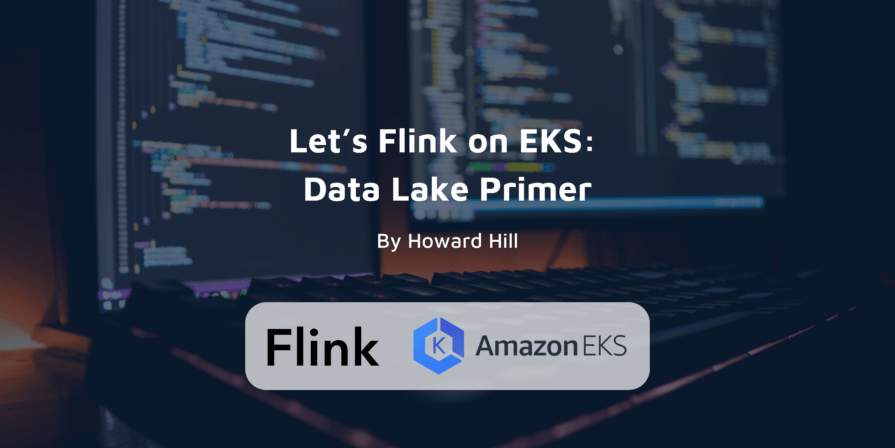
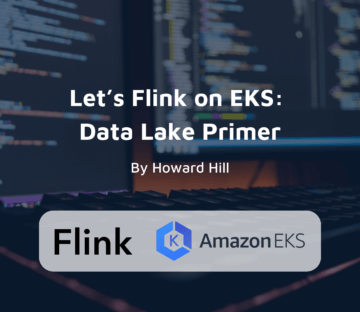
November 22, 2023 | Blog, Data Analysis
Check out the latest blog by Our Senior Consultant Howard Hill where he offers an engineer’s guide to streamlining real-time data using an open-model infrastructure.
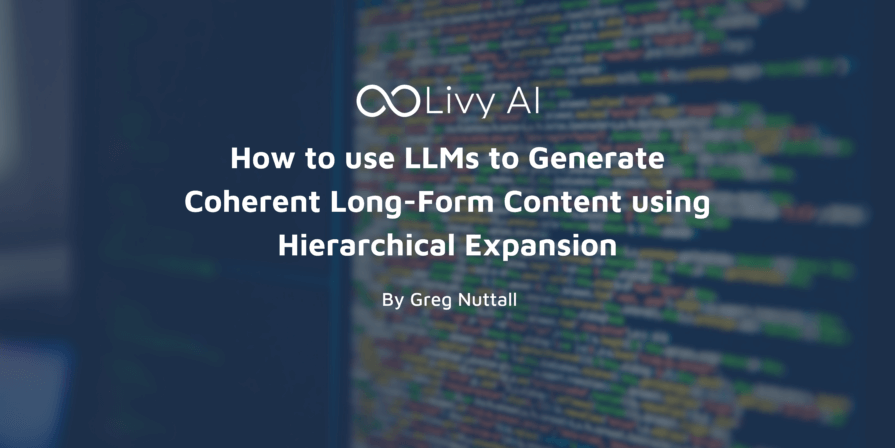

October 30, 2023 | Blog
As impressive as they are, Large Language Models (LLMs) face difficulties when creating long-form content, primarily due to token limitations and inconsistencies in the output over time.
Together with Livy.ai, we developed a “Hierarchical Expansion” method to address these challenges and better the quality, flow, and structure of the content produced. Read further to learn more!
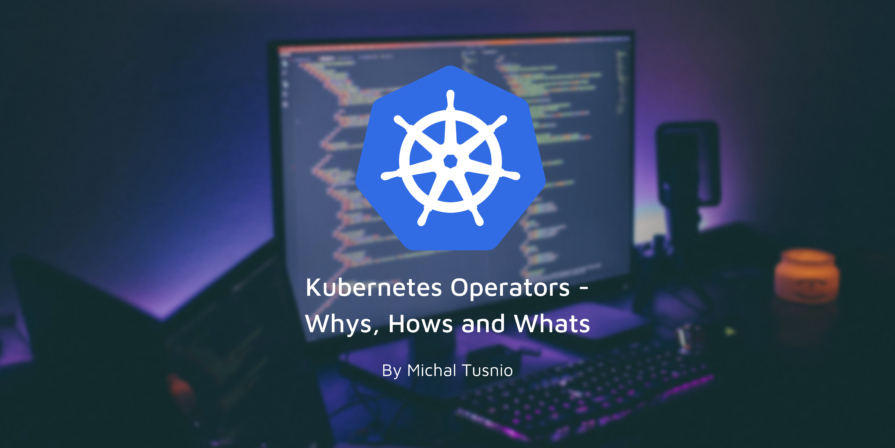
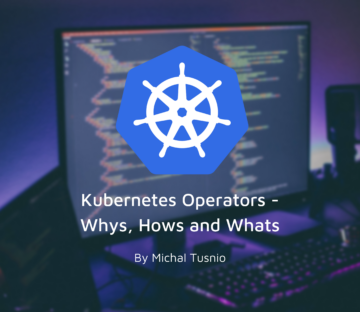
September 27, 2023 | Blog, Kubernetes
Learn to create your first Kubernetes operator by checking out our Senior Consultant Michal Tusnio’s latest blog, “Kubernetes Operators – Whys, Hows and Whats” where he takes you on a journey from zero to operator.
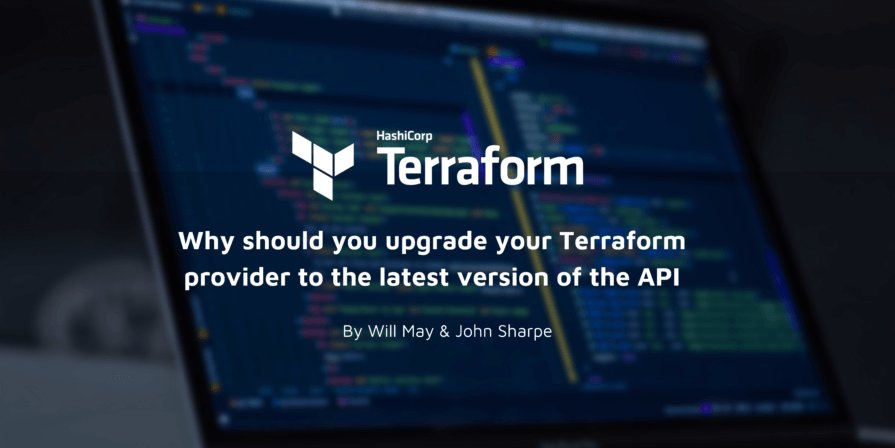
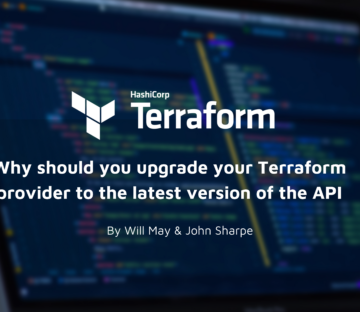
August 17, 2023 | Blog, Terraform Provider
Check out John Sharpe and Will May’s latest blog where they give suggestions for Terraform Provider authors who are thinking about upgrading from SDKv2 to Framework
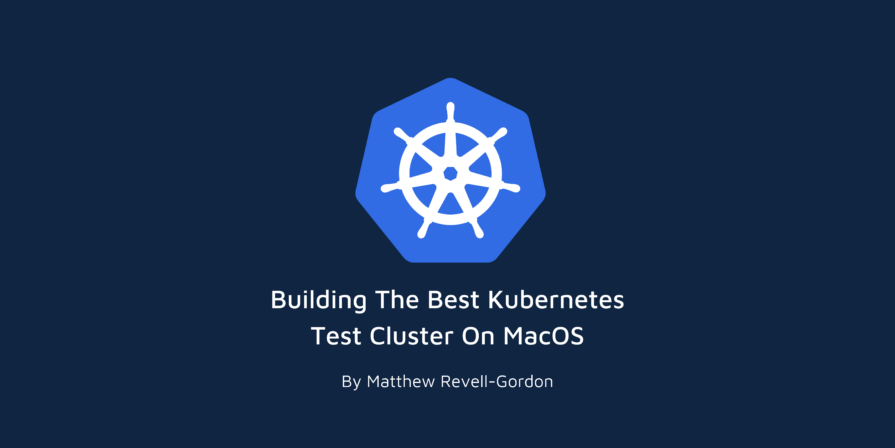
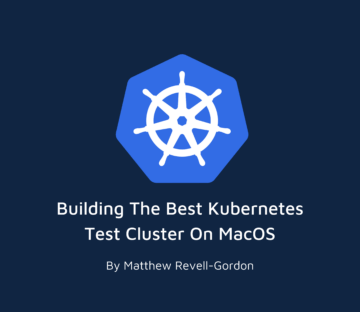
May 18, 2023 | Blog, Kubernetes
Check out Matthew Revell-Gordon’s latest blog as he explores building a local Kubernetes test cluster to better mimic cloud-based deployments, using Colima, Kind, and MetalLB.
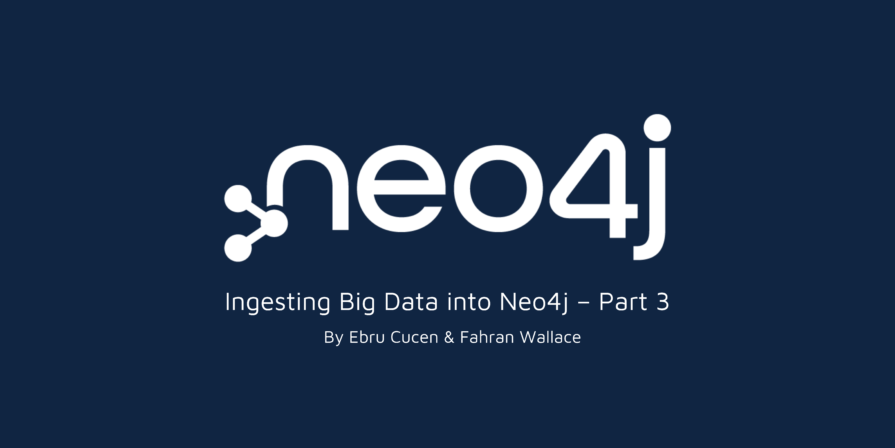
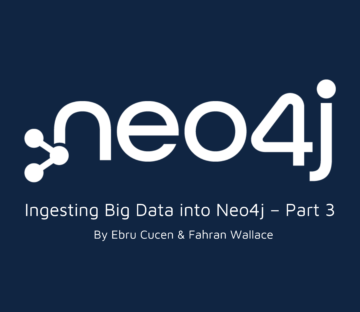
March 9, 2023 | Blog, Data Analysis, Neo4j
Check out the last part of Ebru Cucen and Fahran Wallace’s blog series, in which they discuss their experience ingesting 400 million nodes and a billion relationships into Neo4j and what they discovered along the way.
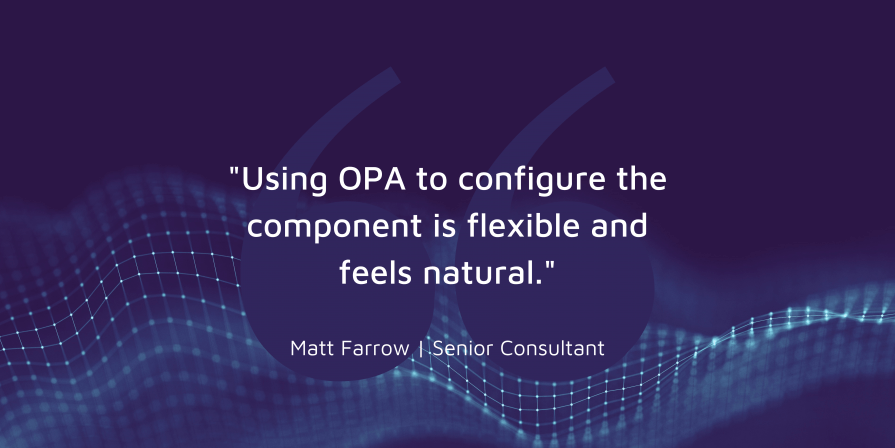
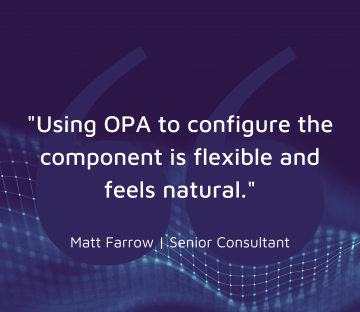
Read Matt Farrow’s blog as he explores the potential for using Open Policy Agent to filter and mask data being sent to and read from Apache Kafka.

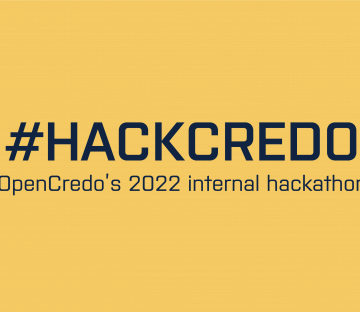
As we are passionate about using technology to solve problems, we are thrilled to share with you our internal competition, “HackCredo.” Read on to learn more about the competition, the groups, and the winners.


June 14, 2022 | Blog, Culture, White Paper
Many businesses advocate for efficiency, but this is not always the right goal. Part one of this article explores how product teams can balance two important considerations – efficiency and effectiveness. Part two builds on this idea, uncovering the non-obvious implications of using technology to bring about efficiency and wider change.

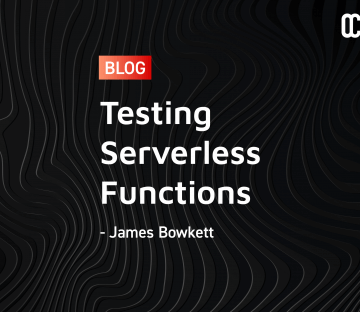
February 11, 2022 | AWS, Cloud, GCP, Kubernetes, Microservices, Open Source, Software Consultancy
Serverless functions are easy to install and upload, but we can’t ignore the basics. This article looks at different strategies related to testing serverless functions.


November 4, 2021 | Kubernetes
We always read that ‘security is everyone’s responsibility’. For any organisation, big or small, security should always be the primary concern—not a mere afterthought. In terms of Kubernetes, securing a cluster is challenging because it has so many moving parts and, apart from securing our Kubernetes environment, we also want to control what an end-user can do in our cluster.
To achieve these goals, we can start with the built-in features provided by Kubernetes like Role-Based Access Control (RBAC), Network Policies, Secrets Management, and Pod Security Policies (PSP). But we know these features are not enough. For example, we may want specific policies like ‘all pods must have specific labels’. And even if we have the policies in place, the next big question is how to enforce them on our Kubernetes cluster in an easy and repeatable manner.
In this blog post, we’ll address this challenge and other questions pertaining to OPA and how it can integrate into Kubernetes.


September 2, 2021 | Blog, Cloud, Kubernetes
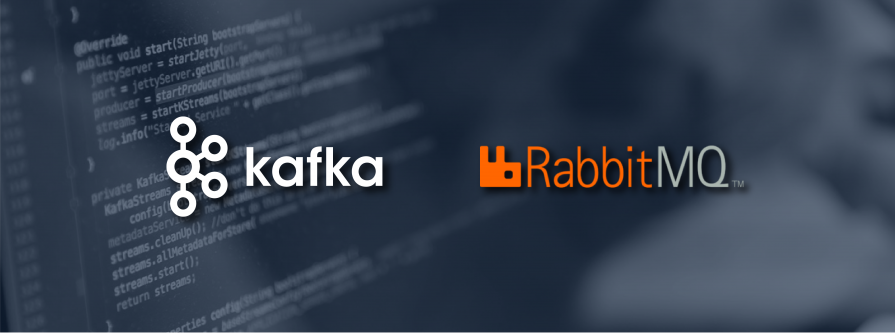
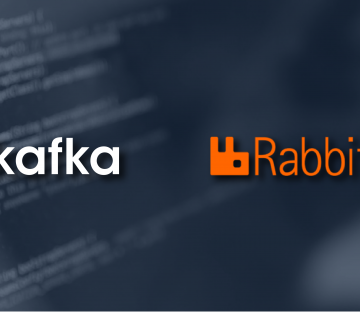
July 20, 2021 | Blog, Data Engineering, Kafka
Message and event-driven systems provide an array of benefits to organisations of all shapes and sizes. At their core, they help decouple producers and consumers so that each can work at their own pace without having to wait for the other – asynchronous processing at its best.
In fact, such systems enable a whole range of messaging patterns, offering varying levels of guarantees surrounding the processing and consumption options for clients. Take for example the publish/subscribe pattern, which enables one message to be broadcast and consumed by multiple consumers; or the competing consumer pattern, which enables a message to be processed once but with multiple concurrent consumers vying for the honour—essentially providing a way to distribute the load. The manner in which these patterns are actually realised however, depends a lot on the technology used, as each has its own approach and unique tradeoffs.
In this article we will explore how this all applies to RabbitMQ and Apache Kafka, and how these two technologies differ, specifically from a message consumer’s perspective.
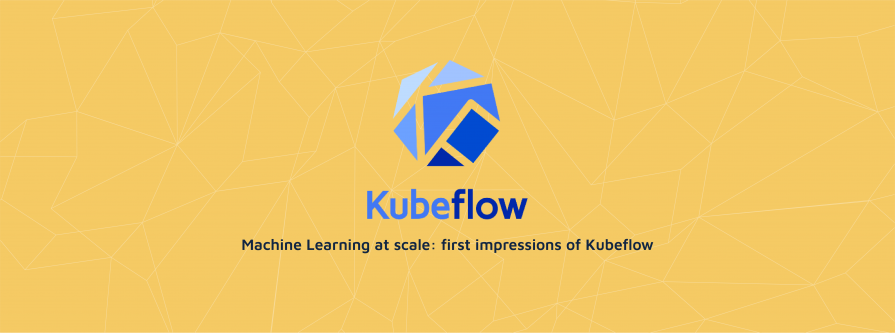
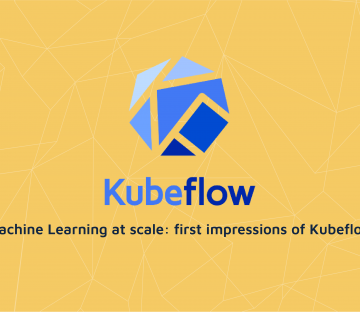
April 20, 2021 | Data Engineering, Machine Learning, Software Consultancy
Our recent client was a Fintech who had ambitions to build a Machine Learning platform for real-time decision making. The client had significant Kubernetes proficiency, ran on the cloud, and had a strong preference for using free, open-source software over cloud-native offerings that come with lock-in. Several components were spiked with success (feature preparation with Apache Beam and Seldon for model serving performed particularly strongly). Kubeflow was one of the next technologies on our list of spikes, showing significant promise at the research stage and seemingly a good match for our client’s priorities and skills.
That platform slipped down the client’s priority list before completing the research for Kubeflow, so I wanted to see how that project might have turned out. Would Kubeflow have made the cut?

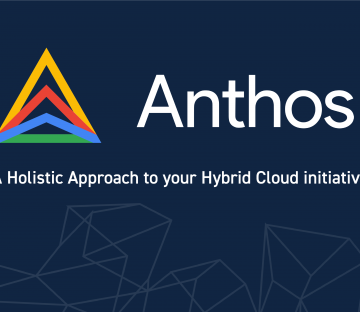
February 17, 2021 | Blog, Cloud, Cloud Native, GCP, Open Source
Multi-cloud is rapidly becoming the cloud strategy of choice for enterprises looking to modernise their applications.
And the reason is simple – it gives them much more flexibility to host their workloads and data where it suits them best.
In this post, we focus on Google’s application modernisation solution Google Anthos and the role it can play in your cloud transformation strategy.
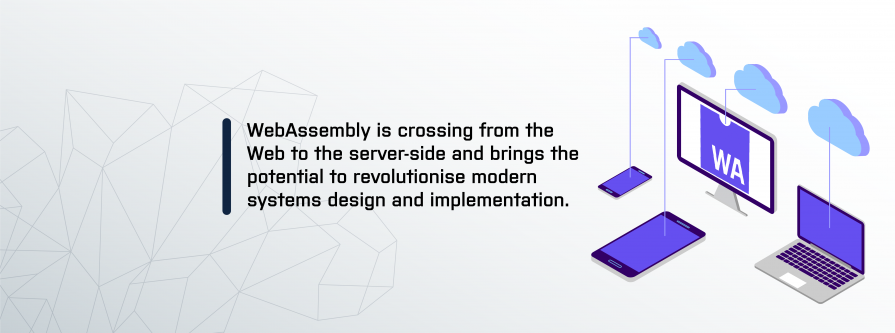
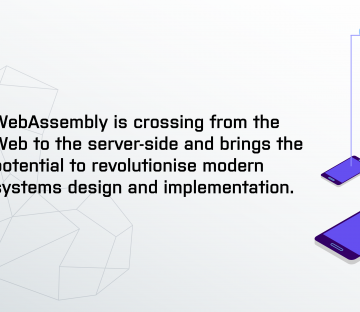
December 11, 2020 | Cloud, Cloud Native, Kubernetes, Microservices
“WebAssembly is a safe, portable, low-level code format designed for efficient execution and compact representation.” – W3C
In this blog, I’ll cover the different applications of Wasm and WASI, some of the projects that are making headway, and the implications for modern architectures and distributed systems.
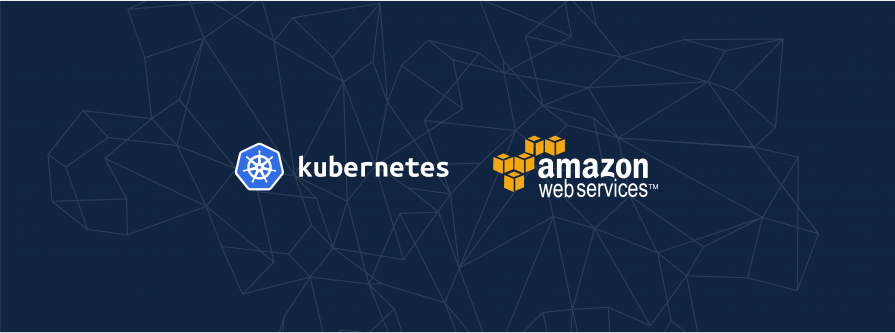
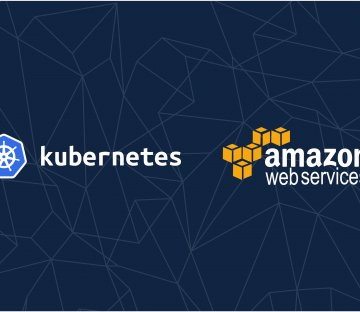
October 29, 2020 | Cloud, Kubernetes, Open Source
While working with a client recently, we experienced some issues when attempting to make use of NLB external load balancer services when using AWS EKS. I wanted to investigate whether these issues had been fixed in the upstream GitHub Kubernetes repository, or if I could fix it myself, contributing back to the community in the process.
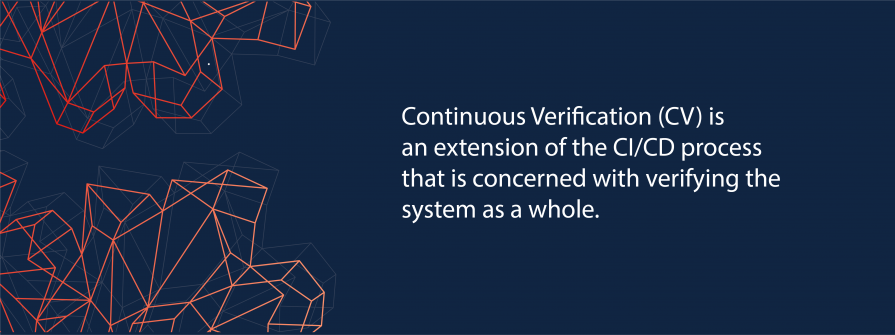
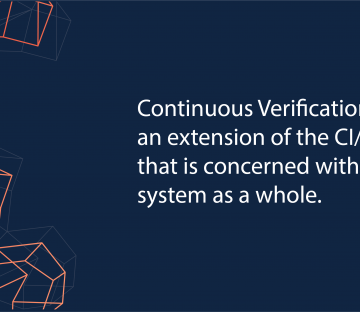
October 15, 2020
Continuous Verification is a term that is starting to pop up from time-to-time… but what does it mean? Well… according to Nora Jones and Casey Rosenthal, authors of O’Reilly’s Chaos Engineering books,
“Continuous verification (CV) is a discipline of proactive experimentation, implemented as tooling that verifies system behaviors. This stands in contrast to prior common practices in software quality assurance, which favor reactive testing, implemented as methodologies that validate known properties of software. This isn’t to say that prior common practices are invalid or should be deprecated. Alerting, testing, code reviews, monitoring, SRE practices, and the like—these are all great practices and should be encouraged”
Over the course of this post, we will unpack this statement: to understand what is behind it and what it might mean for your development process.
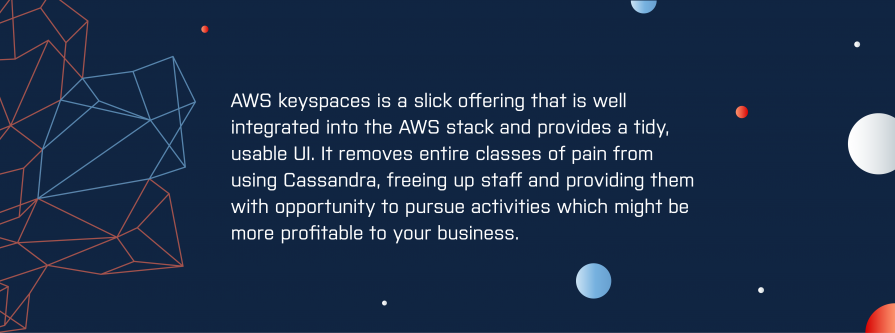

September 22, 2020 | AWS, Blog, Cassandra, Cloud, DevOps, Open Source
With the upcoming Cassandra 4.0 release, there is a lot to look forward to. Most excitingly, and following a refreshing realignment of the Open Source community around Cassandra, the next release promises to focus on fundamentals: stability, repair, observability, performance and scaling.
We must set this against the fact that Cassandra ranks pretty highly in the Stack Overflow most dreaded databases list and the reality that Cassandra is expensive to configure, operate and maintain. Finding people who have the prerequisite skills to do so is challenging.


April 2, 2020 | Machine Learning
Recent years have seen many companies consolidate all their data into a data lake/warehouse of some sort. Once it’s all consolidated, what next?
Many companies consolidate data with a field of dreams mindset – “build it and they will come”, however a comprehensive data strategy is needed if the ultimate goals of an organisation are to be realised: monetisation through Machine Learning and AI is an oft-cited goal. Unfortunately, before one rushes into the enticing world of machine learning, one should lay more mundane foundations. Indeed, in data science, estimates vary between 50% to 80% of the time taken is devoted to so-called data-wrangling. Further, Google estimates ML projects produce 5% ML code and 95% “glue code”. If this is the reality we face, what foundations are required before one can dive headlong into ML?


March 20, 2020
Traditionally, Usability and Security have been set in opposition to each other: with tight security, we end up with painful user experience. In this blog, Guy focuses on financial services as an exemplar of how we can introduce usability into a vertical with challenging security and compliance requirements.


November 13, 2019 | Software Consultancy
Pioneering and pushing technology boundaries – pretty much a given nowadays for the software-driven startup. Here are some insights we’ve observed working with a number of venture capital (VC) companies who have managed to navigate the choppy waters and successfully grow their business including winning further investment along the way.
With our deep hands-on technical expertise and pragmatic focus, OpenCredo has become a natural software acceleration partner for VC funded organisations who are looking to deliver tangible value as effectively as possible. We’ve been brought in to work alongside these innovators at various stages of their journey. As such we’ve gained an appreciation for and acquired, first-hand insight into some of the pressures and challenges faced. From getting and securing that next round of funding, to grappling with the technical decisions and challenges inherent in sensibly evolving offerings to accommodate future growth and scaling.
This blog is written exclusively by the OpenCredo team. We do not accept external contributions.


October 8, 2019 | Cloud, Cloud Native, Culture
Following on from the last two blogs by Stuart (who shared highlights for day 1) and Trent (who shared highlights from day 2), I will conclude with mine on CloudNative London 2019 Day 3.
The Cloud Native landscape can be bewildering, and not only for newcomers. As a traveller on the Cloud-native journey, I have sometimes been overwhelmed by the number of products and projects. This is why I took hold of the opportunity to go to Day 3 of the Cloud Native London Conference last month hosted by Skills Matter.
Here are my top highlights from Day 3 of the CloudNative London 2019.

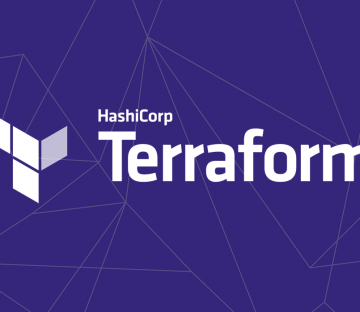
October 3, 2019 | Cloud, DevOps, Hashicorp, Open Source
Terraform 0.12 in recent years has emerged as the de facto standard with regards to defining and managing cloud infrastructure. It is one of four primary tools offered by HashiCorp, (Terraform, Vault, Consul and Nomad) and underpins the workflows that make up their Cloud Operating Model.
Since its first release in 2014, the wider Terraform community has embraced frequent releases and this past year has been no exception. HashiCorp announced the release of Terraform 0.12 in May 2019 and as of writing this post the official release is 0.12.9.


October 1, 2019 | Cloud, Cloud Native, Culture
One of the benefits we have working at OpenCredo (OC) is the opportunity to both attend and speak (although not on this occasion) at conferences. For some of you, this may be pretty common, but OC was actually the first to offer me this as part of a broader learning and development plan.
Cloud-native development and delivery is a core area of expertise for OC and we are always looking for what’s new and interesting in this space. So when I was offered the chance to go to CloudNative London it seemed like a good place to start. With its diversity in topics and technologies, the conference provided a perfect opportunity to collaborate and hear from others in the industry and what they are doing in this space.


August 14, 2019 | Culture, News
Here, in our little nook of the internet, we usually write about our experiences of emerging technologies, the tricky coding problems we’ve solved and how we have enhanced our clients’ businesses. We do this because we are very proud of this work. It truly matters.
Today is a little different. Today I’d like to share something a little more personal. Something that brings loneliness, kindness and technology together in an oxytocin-generating, slightly awkward embrace. Because hugs matter too.


Writing your own Kafka source connectors with Kafka Connect. In this blog, Rufus takes you on a code walk, through the Gold Verified Venafi Connector while pointing out the common pitfalls


February 20, 2019 | DevOps, Hashicorp, Kafka, Open Source
Creating and managing a Public Key Infrastructure (PKI) could be a very straightforward task if you use appropriate tools. In this blog post, I’ll cover the steps to easily set up a PKI with Vault from HashiCorp, and use it to secure a Kafka Cluster.


February 5, 2019 | Cloud Native, DevOps, Kubernetes, Microservices, Open Source
While Prometheus has fast become the standard for monitoring in the cloud, making Prometheus highly available can be tricky. This blog post will walk you through how to do this using the open source tool Thanos.


July 31, 2018 | Machine Learning
Machine Learning, alongside a mature Data Science, will help to bring IT and business closer together. By leveraging data for actionable insights, IT will increasingly drive business value. Agile and DevOps practices enable the continuous delivery of business value through productionised machine learning models and software delivery.


July 13, 2018 | Software Consultancy
As a consultant I often find myself in situations that require tricky problem solving, typically of a technical nature. Yet although it is common to approach a consultancy engagement in terms of its technical context, not all problems have a purely technical solution.


May 16, 2018 | Microservices
To identify service boundaries, it is not enough to consider (business) domains only. Other forces like organisational communication structures, and – very important – time, strongly suggest that we should include several other criteria in our considerations.


February 6, 2018 | Cloud
Among the many announcements made at Re:Invent 2017 was the release of AWS Privatelink for Customer and Partner services. We believe that the opportunity signalled by this modest announcement may have an impact far broader than first impressions suggest.


January 23, 2018 | Data Engineering, DevOps
Machine Learning is a hot topic these days, as can be seen from search trends. It was the success of Deepmind and AlphaGo in 2016 that really brought machine learning to the attention of the wider community and the world at large.


January 11, 2018 | Data Engineering
The last few years have seen Python emerge as a lingua franca for data scientists. Alongside Python we have also witnessed the rise of Jupyter Notebooks, which are now considered a de facto data science productivity tool, especially in the Python community. Jupyter Notebooks started as a university side-project known as iPython in circa 2001 at UC Berkeley.


October 24, 2017 | Data Engineering
Cockroach Labs, the creators of CockroachDB are coming to London for the first time since their 1.0 GA Release in May 2017. They will be taking time to talk about “The Hows & Whys of a Distributed SQL Database” at the Applied Data Engineering meetup, hosted and run by us here at OpenCredo.
We have been interested in CockroachDB for a while now, including publishing our initial impressions of the release on our blog. We thought this would be the perfect time to do a bit of a Q&A before the event! I posed Raphael Poss, a core Software Engineer at Cockroach Labs a few questions.


August 9, 2017 | Cloud, DevOps, Terraform Provider
The recent 0.10.0 release of HashiCorp Terraform, saw a significant change to the way Providers are managed. Specifically, the single open source code repository for Terraform has been divided into core and multiple provider repositories.


June 15, 2017 | Data Engineering
CockroachDB is a distributed SQL (“NewSQL”) database developed by Cockroach Labs and has recently reached a major milestone: the first production-ready, 1.0 release. We at OpenCredo have been following the progress of CockroachDB for a while, and we think it’s a technology of great potential to become the go-to solution for a having a general-purpose database in the cloud.


May 9, 2017 | Cassandra
Data analytics isn’t a field commonly associated with testing, but there’s no reason we can’t treat it like any other application. Data analytics services are often deployed in production, and production services should be properly tested. This post covers some basic approaches for the testing of Cassandra/Spark code. There will be some code examples, but the focus is on how to structure your code to ensure it is testable!
This blog is written exclusively by the OpenCredo team. We do not accept external contributions.


May 2, 2017 | Cassandra, Data Engineering
My recent blogpost I explored a few cases where using Cassandra and Spark together can be useful. My focus was on the functional behaviour of such a stack and what you need to do as a developer to interact with it. However, it did not describe any details about the infrastructure setup that is capable of running such Spark code or any deployment considerations. In this post, I will explore this in more detail and show some practical advice in how to deploy Spark and Apache Cassandra.


April 25, 2017 | Cassandra, Data Analysis, Data Engineering
Apache Spark is a powerful open source processing engine which is fast becoming our technology of choice for data analytic projects here at OpenCredo. For many years now we have been helping our clients to practically implement and take advantage of various big data technologies including the like of Apache Cassandra amongst others.


March 23, 2017 | Cassandra, Data Analysis, Data Engineering
In recent years, Cassandra has become one of the most widely used NoSQL databases: many of our clients use Cassandra for a variety of different purposes. This is no accident as it is a great datastore with nice scalability and performance characteristics.
However, adopting Cassandra as a single, one size fits all database has several downsides. The partitioned/distributed data storage model makes it difficult (and often very inefficient) to do certain types of queries or data analytics that are much more straightforward in a relational database.


March 20, 2017 | DevOps
DevOps has swept the tech landscape. Now, many are discovering the benefits of programmable infrastructure. I have been lucky to work on many projects where we’ve taken advantage of tools such as Terraform, Ansible, or Chef.


March 7, 2017 | Data Analysis, GCP
Google has recently made its internal Spanner database available to the wider public, as a hosted solution on Google Cloud. This is a distributed relational/transactional database used inside for various Google projects (including F1, the advertising backend), promising high throughput, low latency and 99.999% availability. As such it is an interesting alternative to many open source or other hosted solutions. This whitepaper gives a good theoretical introduction into Spanner.


February 16, 2017 | Cassandra
One of the default Cassandra strategies to deal with more sophisticated queries is to create CQL tables that contain the data in a structure that matches the query itself (denormalization). Cassandra 3.0 introduces a new CQL feature, Materialized Views which captures this concept as a first-class construct.


February 13, 2017 | Data Engineering
One of the stated intentions behind the design of Java 8’s Streams API was to take better advantage of the multi-core processing power of modern computers. Operations that could be performed on a single, linear stream of values could also be run in parallel by splitting that stream into multiple sub-streams, and combining the results from processing each sub-stream as they became available.


January 25, 2017 | Cassandra
One of the simplest and best-understood models of computation is the Finite State Machine (FSM). An FSM has fixed range of states it can be in, and is always in one of these states. When an input arrives, this triggers a transition in the FSM from its current state to the next state. There may be several possible transitions to several different states, and which transition is chosen depends on the input.


January 24, 2017 | Cloud
This blog aims to provide an end to end example of how you can automatically request, generate and install a free HTTPS/TLS/SSL certificate from Let’s Encrypt using Terraform. Let’s Encrypt is a free, automated, and open certificate authority (CA) aiming to make it super easy (and free – did I say free!) for people to obtain HTTPS (SSL/TLS) certificates for their websites and infrastructure. Under the hood, Let’s Encrypt implements and leverages an emerging protocol called ACME to make all this magic happen, and it is this ACME protocol that powers the Terraform provider we will be using. For more information on how Let’s Encrypt and the ACME protocol actually work, please see how Let’s Encrypt works.


January 23, 2017 | Data Analysis
More often than not, people who write Go have some sort of opinion on its error handling model. Depending on your experience with other languages, you may be used to different approaches. That’s why I’ve decided to write this article, as despite being relatively opinionated, I think drawing on my experiences can be useful in the debate. The main issues I wanted to cover are that it is difficult to force good error handling practice, that errors don’t have stack traces, and that error handling itself is too verbose.


January 13, 2017 | Software Consultancy
The notorious FizzBuzz interview test was originally proposed as a way of weeding out candidates for programming jobs who – to put it bluntly – couldn’t program. The task is as follows:
Write a program that prints the numbers from 1 to 100. But for multiples of three print “Fizz” instead of the number and for the multiples of five print “Buzz”. For numbers which are multiples of both three and five print “FizzBuzz”.
It turns out that this problem has just enough subtlety about it to cause headaches to anyone who knows the basics but hasn’t learned how to think in nested structures.


October 13, 2016 | Data Analysis
In Lisp, you don’t just write your program down toward the language, you also build the language up toward your program. As you’re writing a program you may think “I wish Lisp had such-and-such an operator.” So you go and write it. Afterward you realize that using the new operator would simplify the design of another part of the program, and so on. Language and program evolve together…In the end your program will look as if the language had been designed for it. And when language and program fit one another well, you end up with code which is clear, small, and efficient – Paul Graham, Programming Bottom-Up


September 15, 2016 | Cassandra
Cassandra isn’t a relational database management system, but it has some features that make it look a bit like one. Chief among these is CQL, a query language with an SQL-like syntax. CQL isn’t a bad thing in itself – in fact it’s very convenient – but it can be misleading since it gives developers the illusion that they are working with a familiar data model, when things are really very different under the hood.


August 26, 2016 | Kubernetes
This post is the last of a series of three tutorial articles introducing a sample, tutorial project, demonstrating how to provision Kubernetes on AWS from scratch, using Terraform and Ansible. To understand the goal of the project, you’d better start from the first part.


August 26, 2016 | Kubernetes
This post is the second of a series of three tutorial articles introducing a sample, tutorial project, demonstrating how to provision Kubernetes on AWS from scratch, using Terraform and Ansible. To understand the goal of the project, you’d better start from the first part.


August 26, 2016 | Kubernetes
This post is the first of a series of three tutorial articles introducing a sample, tutorial project, demonstrating how to provision Kubernetes on AWS from scratch, using Terraform and Ansible.


August 24, 2016 | Cassandra
At OpenCredo we are seeing an increase in adoption of Apache Cassandra as a leading NoSQL database for managing large data volumes, but we have also seen many clients experiencing difficulty converting their high expectations into operational Cassandra performance. Here we present a high-level technical overview of the major strengths and limitations of Cassandra that we have observed over the last few years while helping our clients resolve the real-world issues that they have experienced.


July 8, 2016 | Microservices
OpenCredo recently co-organised the first Microservices Manchester event with OliverBernard recruitment, and it was a resounding success. Over 100 people showed up at the Victoria Warehouse near Manchester’s trendy Salford Quays for a day discussing the realities of implementing microservice systems.


July 3, 2016 | DevOps
Several of us from the OpenCredo team were in attendance at the inaugural EU edition of the DevOps Enterprise Summit conference. We have been big fans of the two previous US versions, and have watched the video recordings of talks (2014, 2015) with keen interest as many of our DevOps transformation clients are very much operating in the ‘enterprise’ space.


June 15, 2016 | Software Consultancy
It’s as simple as that – and as a consultant, it’s a problem I see all the time. Testing is always focused on functional testing. Non-functional testing, by comparison, is treated like a second class citizen. This means that functional requirements get refined, and non-functional requirements are ignored until the very end.



June 3, 2016 | Software Consultancy
In this post, I’m going to take something extremely simple, unfold it into something disconcertingly complex, and then fold it back into something relatively simple again. The exercise isn’t entirely empty: in the process, we’ll derive a more powerful (because more generic) version of the extremely simple thing we started with. I’m describing the overall shape of the journey now, because programmers who don’t love complexity for its own sake often find the initial “unfolding” stage objectionable, and then have trouble regarding the eventual increase in fanciness as worth the struggle.


April 5, 2016 | Software Consultancy
This post is part of a series which introduce key concepts in successful test automation. Each post contains sample code using the test-automation-quickstart project, a sample Java test automation framework available from Github.


March 17, 2016 | Software Consultancy
In order to be able to regularly release an application, your automated tests must be set up to give you fast and reliable feedback loop. If bugs are only found during a long and expensive multi-service or end-to-end test run, it can be a hinderance to fast delivery. Unfortunately I have often seen this problem in development environments: a huge suite of clunky, flaky and slow end-to-end tests which test the full functionality of the application as opposed to being more lightweight and reflecting basic user journeys. This produces the “ice cream cone” anti-pattern of test coverage, where unit tests aren’t providing the kind of coverage and feedback they need to.


March 3, 2016 | Software Consultancy
In this post, I’ll be sharing some React/Redux boilerplate code that Vince Martinez and I have been developing recently. It’s primarily aimed at developers who are familiar with the React ecosystem, so if you are new to React and/or Redux, you might like to have a look at Getting Started with React and Getting Started with Redux.


March 3, 2016 | Software Consultancy
JetBrains (the people behind IntelliJ IDEA) have recently announced the first RC for version 1.0 of Kotlin, a new programming language for the JVM. I say ‘new’, but Kotlin has been in the making for a few years now, and has been used by JetBrains to develop several of their products, including Intellij IDEA. The company open-sourced Kotlin in 2011, and have worked with the community since then to make the language what it is today.


March 2, 2016 | DevOps, Microservices
Many of our clients are currently implementing applications using a ‘microservice’-based architecture. Increasingly we are hearing from organisations that are part way through a migration to microservices, and they want our help with validating and improving their current solution. These ‘microservices checkup’ projects have revealed some interesting patterns, and because we have experience of working in a wide-range of industries (and also have ‘fresh eyes’ when looking at a project), we are often able to work alongside teams to make significant improvements and create a strategic roadmap for future improvements.


January 29, 2016 | DevOps
DevOps is 2016’s tech holy grail – unified development and operations, both working to deliver what the business needs, quickly, reliably, and adaptably. Done well, DevOps transforms the way organisations work; it helps break down barriers between tech teams, and between technology and the rest of the business. Good DevOps is the antidote to increasing segmentation and specialisation within companies. With the promised benefits, is it any wonder that senior managers are pushing for it in organisations spanning all sizes and industries?


January 26, 2016 | Data Engineering
In this second post about Hazelcast and Spring, I’m integrating Hazelcast and Spring-managed transaction for a specific use case: A transactional Queue. More specifically, I want to make the message polling, of my sample chat application, transactional.


January 18, 2016 | Software Consultancy
Last time in this series I summarised all the Akka Persistence related improvements in Akka 2.4. Since then Akka 2.4.1 has been released with some additional bug fixes and improvements so perhaps now is a perfect time to pick up this mini-series and introduce some other new features included in Akka 2.4.x.


January 8, 2016 | Microservices
Many of our clients are in the process of investigating or implementing ‘microservices’, and a popular question we often get asked is “what’s the most common mistake you see when moving towards a microservice architecture?”. We’ve seen plenty of good things with this architectural pattern, but we have also seen a few recurring issues and anti-patterns, which I’m keen to share here.


December 22, 2015 | Software Consultancy
We announced yesterday that CloudCredo has been acquired by Pivotal. In the longer term this will probably solve one of my challenges that is the need to constantly explain the difference between OpenCredo and CloudCredo, since CloudCredo will eventually be absorbed into Pivotal. Yesterday’s announcement has created significant interest, and so I thought I would try to clear things up with a quick post.


December 16, 2015 | Cloud, DevOps
In the rush to embrace DevOps, many organisations seek out tools to help them achieve DevOps nirvana; the magical tools that will unify Development and Operations, stop the infighting, and ensure collaboration. This search for tools to solve problems exists in many domains, but seems particularly prevalent in IT (it may be real, or a reflection of my exposure to IT). The temptation to embrace new tools as a panacea is high, because the problems in IT seem so pervasive and persistent.




December 1, 2015 | Software Consultancy
This post introduce some of the basic features of Hazelcast, some of its limitations, how to embed it in a Spring Boot application and write integration testings. This post is intended to be the first of a series about Hazelcast and its integration with Spring (Boot). Let’s start from the basics.


November 25, 2015 | Microservices
In May a 1.0 release of RAML (RESTful API Markup Language) has been announced delivering a few much welcome additions in the RAML 1.0 specification. This major release marks an important milestone in the evolution of RAML and indicates the team behind the specification is confident this release delivers the comprehensive set of tools for developing RESTful APIs. I’ve been using RAML 0.8 for several months now and have enjoyed the simplicity and productivity it offers for designing and documenting APIs. I must say I’m quite pleased with the changes introduced in the new release and would like to review those I consider particularly useful.


November 3, 2015 | Software Consultancy
My JavaOne experience was rather busy this year, what with three talks presented in a single day! The first of these talks “Debugging Java Apps in Containers: No Heavy Welding Gear Required” was delivered with my regular co-presenter Steve Poole, from IBM, and we shared our combined experiences of working with Java and Docker over the past year.


October 31, 2015 | Microservices
Over the past few weeks I’ve been writing an OpenCredo blog series on the topic of “Building a Microservice Development Ecosystem”, but my JavaOne talk of the same title crept up on me before I managed to finish the remaining posts. I’m still planning to finish the full blog series, but in the meantime I thought it would be beneficial to share the video and slides associated with the talk, alongside some of my related thinking. I’ve been fortunate to work on several interesting microservice projects at OpenCredo, and we’re always keen to share our knowledge or offer advice, and so please do get in touch if we can help you or your organisation.


October 30, 2015 | Cloud, DevOps
In some companies, the inevitable rapidly became accepted as the way to do things, and both development and IT operations worked together to figure out how to collaborate on building systems that satisfied development’s desire for change, and operations desire for stability. Outsourcing infrastructure, and all it implied, gave rise to Devops – the unification of business needs, developer delivery, and operational capacity – but it also gave rise to something else, in companies where the operations teams weren’t quite as quick to move – Shadow IT.


October 28, 2015 | Software Consultancy
Let’s have a quick look at the most interesting changes and new features that are now available to Akka users. As there are many new features to highlight in the new Akka release I will focus on those related to Akka Persistence first and cover other areas in a separate post.


October 12, 2015 | DevOps
DevOps is transformative. This (hopefully) won’t be true forever, but it is for now. While the modern management practices of separating development and operations (and to a lesser extent, everyone else) prevail, the tearing down of the walls that separate them will remain transformative. In company after company, management and front-line staff are coming to realise that keeping functions separate, which are inherently interdependent, is a model for blame, shifted responsibility, and acrimony. It’s easy to divvy-up a company up based on function. To many people, it seems the most logical way to do it. Ops does operations, Dev does development, Marketing markets, etc. It seems much harder to do it any other way. So why do it?


October 7, 2015 | Software Consultancy
It’s well known that predicting how long a project/task will take in IT is hard. In this post I’ll address one aspect of this (correlation) and ask what insights a data science perspective can give us about how correlations can make prediction difficult. I’ll explain the problems that correlation poses, give some practical advice for teams & project managers and investigate possible innovations to tooling that might improve matters.


September 24, 2015 | Software Consultancy
You’ve implemented a change in how things work, and people aren’t happy. You spent time investigating the problem, and putting serious thought into what the issue was, and you’ve put a fix in place that you were sure people would be happy with. They aren’t. Why not?


September 24, 2015 | Microservices
Unless you’ve been living under a (COBOL-based) rock for the last few years, you will have no doubt heard of the emerging trend of microservices. This approach to developing ‘loosely coupled service-oriented architecture with bounded contexts’ has captured the hearts and minds of many developers. The promise of easier enforcement of good architectural and design principles, such as encapsulation and interface segregation, combined with the availability to experiment with different languages and platforms for each service, is a (developer) match made in heaven.
![Microservice Platforms: Some Assembly [Still] Required. Part Two](https://opencredo.com/wp-content/uploads/2018/10/banner-services-895x196.jpg)
![Microservice Platforms: Some Assembly [Still] Required. Part Two](https://opencredo.com/wp-content/uploads/2018/10/banner-services-360x312.jpg)
September 20, 2015 | Microservices
Over the past five years I have worked within several projects that used a ‘microservice’-based architecture, and one constant issue I have encountered is the absence of standardised patterns for local development and ‘off the shelf’ development tooling that support this. When working with monoliths we have become quite adept at streamlining the development, build, test and deploy cycles. Development tooling to help with these processes is also readily available (and often integrated with our IDEs). For example, many platforms provide ‘hot reloading’ for viewing the effects of code changes in near-real time, automated execution of tests, regular local feedback from continuous integration servers, and tooling to enable the creation of a local environment that mimics the production stack.


September 14, 2015 | DevOps, Hashicorp, Open Source
Recently I was working on a project that was using SaltStack for configuration management and Consul for service discovery. It occurred to me that using Consul’s key/value store would be great place to store data needed for my Salt runs, but unfortunately Consul was not supported in SaltStack as an official data store at that point in time. Being an open source project however, this provided an excellent opportunity to contribute back and this blog post looks to provide some details on how this works, as well as a practical demo on how you can take advantage of Consul as an external data store.


September 14, 2015 | Cloud, DevOps
If you are operating in the programmable infrastructure space, you will hopefully have come across Terraform, a tool from HashiCorp which is primarily used to manage infrastructure resources such as virtual machines, DNS names and firewall settings across a number of public and private providers (AWS, GCP, Azure, …).


September 13, 2015 | DevOps
Last week I was privileged to be able to present my “Thinking Fast and Slow with Software Development” talk at the inaugural Software Circus conference in Amsterdam. The conference was amazing, and I’ll write more about this later, but in this post I was keen to share the presentation slides and the thinking behind this talk…


August 19, 2015 | Software Consultancy
Memoization is a technique whereby we trade memory for execution speed. Suppose you have a function which
In this scenario, it may make sense to “remember” the output returned for each distinct input in a hash map, and replace function execution with a lookup in the hash map.


August 18, 2015 | Software Consultancy
In this post, the last in the New Tricks With Dynamic Proxies series (see part 1 and part 2), I’m going to look at using dynamic proxies to create bean-like value objects to represent records. The basic idea here is to have some untyped storage for a collection of property values, such as an array of Objects, and a typed wrapper around that storage which provides a convenient and type-safe access mechanism. A dynamic proxy is used to convert calls on getter and setter methods in the wrapper interface into calls which read and write values in the store.


August 16, 2015 | Kubernetes
 Over the last few years there has been exponential growth in the interest of containers and schedulers – technology such as Docker, rkt, Mesos, and Kubernetes are now commonplace within the IT domain, and with the rise of microservices, these technologies are set to become even more popular. Skillsmatter are keen to drive forward the discussions and knowledge sharing within this area of technology, and have created a conference focused exclusively on containers and schedulers: ContainerSched!
Over the last few years there has been exponential growth in the interest of containers and schedulers – technology such as Docker, rkt, Mesos, and Kubernetes are now commonplace within the IT domain, and with the rise of microservices, these technologies are set to become even more popular. Skillsmatter are keen to drive forward the discussions and knowledge sharing within this area of technology, and have created a conference focused exclusively on containers and schedulers: ContainerSched!


August 11, 2015 | DevOps
For years, OpenCredo has been working with organisations to help them introduce new technologies, and more effective development practices, to their IT teams. This has met with a great deal of success, and we have worked with a variety of companies of various sizes. During these projects, we have consistently noticed that the changes we make reach beyond IT in their impact and effects.


August 10, 2015 | Cloud, Software Consultancy
As a company, we at OpenCredo are heavily involved in automation and devOps based work, with a keen focus on making this a seamless experience, especially in cloud based environments. We are currently working within HMRC, a UK government department to help make this a reality as part of a broader cloud broker ecosystem project. In this blog post, I look to provide some initial insight into some of the tools and techniques employed to achieve this for one particular use case namely:
With pretty much zero human intervention, bar initiating a process and providing some inputs, a development team from any location, should be able to run “something”, which, in the end, results in an isolated, secure set of fully configured VM’s being provisioned within a cloud provider (or providers) of choice.


August 5, 2015 | Data Analysis, Data Engineering
A few weeks ago, we thought about building a Google analytics dashboard to give us easy access to certain elements of our Google Analytics web traffic. We saw some custom dashboards for bloggers, but nothing quite right for our goal, since we wanted the data on a big screen for everyone in the office to view.




July 13, 2015 | Software Consultancy
Why Use Dynamic Proxies?
Dynamic proxies have been a feature of Java since version 1.3. They were widely used in J2EE for remoting. Given an abstract interface, and a concrete implementation of that interface, a call to some method on the interface can be made “remote” (i.e. cross-JVM) by creating two additional classes. The first, a “marshalling” implementation of the interface, captures the details of the call in the source JVM and serializes them over the network. The second, an “unmarshalling” endpoint, receives the serialized call details and dispatches the call to an instance of the concrete class on the target JVM.


July 8, 2015 | Software Consultancy
I was quite excited around autumn last year when Google started to work on a new version of Angular (Angular 2.0) which promised to revolutionise web development. There were rumours that Angular 2.0 wouldn’t be backward compatible with its predecessor, and would be written in Google’s AtScript which is a JavaScript based language on top of Microsoft’s TypeScript. The lack of backwards compatibility raised some concerns, especially for the clients that we had used Angular at. But, lets not get ahead of ourselves here….




March 11, 2015 | Microservices
 One of the pain points experienced with developing microservices is that it often proves too cumbersome to replicate an environment for local development. This usually means the first time an application talks to its “real” dependencies is when it gets deployed to a shared testing environment. A relatively laborious continuous integration process usually precedes this deployment, making our feedback cycle longer than we would like. In this post I describe a workflow that aims to improve that, using Docker and Docker Compose (formerly known as fig).
One of the pain points experienced with developing microservices is that it often proves too cumbersome to replicate an environment for local development. This usually means the first time an application talks to its “real” dependencies is when it gets deployed to a shared testing environment. A relatively laborious continuous integration process usually precedes this deployment, making our feedback cycle longer than we would like. In this post I describe a workflow that aims to improve that, using Docker and Docker Compose (formerly known as fig).


January 30, 2015 | Software Consultancy
When I first started programming in Scala a few years ago, Traits was the language feature I was most excited about. Indeed, Traits give you the ability to compose and share behaviour in a clean and reusable way. In Java, we tend deal with the same concerns by grouping crosscutting behaviour in abstract base classes that are subsequently extended every time we need to access shared behaviour in part or in total.


November 21, 2014 | White Paper
In our latest white paper we cover the high level fundamentals of test automation, discuss the primary problems test automation solves and take a look at the steps required to implement this within your development process – all aimed at improving software delivery.
November 19, 2014 | Microservices
Undeniably, there is a growing interest in microservices as we see more organisations, big and small, evaluating and implementing this emerging approach. Despite its apparent novelty, most concepts and principles underpinning microservices are not exactly new – they are simply proven and commonsense software development practices that now need to be applied holistically and at a wider scale, rather than at the scale of a single program or machine. These principles include separation of concerns, loose coupling, scalability and fault-tolerance.
October 23, 2014 | Cassandra
Spring Data Cassandra (SDC) is a community project under the Spring Data (SD) umbrella that provides convenient and familiar APIs to work with Apache Cassandra.


February 24, 2014 | Cloud Native, Microservices
Last year some of us attended the London Spring eXchange where we encountered a new and interesting tool that Pivotal was working on: Spring Boot. Since then we had the opportunity to see what it’s capable of in a live project and we were deeply impressed.




December 2, 2013 | Cassandra
Perhaps the most important of Cassandra’s selling points is its completely distributed architecture and its ability to easily extend the cluster with virtually any number of nodes. Implementing a classical RDBMS-style transaction consisting of “put locks on the database, modify the data, then commit the transaction”-style operations are simply not feasible in such an architecture (i.e. that doesn’t scale well).


November 14, 2013 | Cassandra
Cassandra 2.0 was released in early September this year and came with some interesting new features, including “lightweight transactions” and triggers.
Despite the rising interest in the various non-relational databases in recent years, there are still numerous use-cases for which a relational database system is a better choice. The latest major release of Cassandra (version 2.0) provides some interesting features that aim to close this gap, and offers its fast and distributed storage engine enhanced with new options that will make users’ lives easier.


September 19, 2013 | Software Consultancy
This post will give an overview of mobile testing using Appium. We will integrate tests for a native Android application into an existing Cucumber-JVM based set of acceptance tests and demonstrate multi platform testing from a single set of BDD scenarios. The sample code for this can be found here.


July 2, 2013 | Software Consultancy
This blog post will address the issue of slow test runs when using Cucumber JVM with web automation tools such as WebDriver to perform acceptance testing on a web application.
If your team is using continuous integration this becomes especially noticeable, forcing teams to either wait for acceptance tests to complete before deploying or having to ignore the bulk of the tests.
The sample code and description in this post will show you how to convert your suite to running tests in parallel, something which has historically been problematic with unanswered questions and outstanding Cucumber-JVM bugs on the subject. Tying the described approach in with Selenium Grid2 will allow you distribute your testing across several machines if your suite is especially large or slow.


June 30, 2013 | Software Consultancy
Spring Data Hadoop (SDH) is a Spring offshoot project that allows the invocation and configuration of Hadoop tasks within a Spring application context. It offers support for Hadoop jobs, HBase, Pig, Hive, Cascading and additionally JSR-223 scripting for job preparation and tidy-up.
It is most suited for use in organisations with existing Spring applications or investment in Spring expertise. Some SDH features replicate functionality of tools in the Hadoop ecosystem that DevOps engineers who maintain a Hadoop cluster will be more familiar with.


February 25, 2013 | Neo4j
As part of our work, we often help our customers choose the right datastore for a project. There are usually a number of considerations involved in that process, such as performance, scalability, the expected size of the data set, and the suitability of the data model to the problem at hand.
This blog post is about my experience with graph database technologies, specifically Neo4j. I would like to share some thoughts on when Neo4j is a good fit but also what challenges Neo4j faces now and in the near future.


February 19, 2013 | Software Consultancy
This blog post continues on from Part 1 which discussed types of tests and how to create robust tests. Part 2 will examine techniques to help whip a test suite in to shape and resolve common issues that slow everything down. The approaches in this post will focus on spring based applications, but the concepts can be applied to other frameworks too.




February 4, 2013 | Software Consultancy
This API will in future be used by a mobile client and by third parties, making it important to verify that it is functionally correct as well as clearly documented.
An additional requirement in our case is for the tests to form a specification for the API to allow front and back end developers agree on the format in advance. This is something that BDD excels at, making it natural to continue to use Cucumber. This post will focus on the difficulties of attaining the appropriate level of abstraction with Cucumber while retaining the technical detail required for specification.


January 10, 2013 | DevOps
Recently I have started looking into SaltStack as a solution that does both config management and orchestration. It is a relatively new project started in 2011, but it has a growing fanbase among Sys Admins and DevOps Engineers. In this blog post I will look into Salt as a promising alternative, and comparing it to Puppet as a way of exploring its basic set of features.


January 7, 2013 | Software Consultancy
The practice of continuous integration in which build servers are used to build and perform testing of code is now widespread and mainstream.
While not all teams have adopted continuous integration effectively, its increasing adoption has led many to start to look for additional opportunities to improve the cost, quality and speed of delivery with which software targeted to meet business needs can be released into production environments.
Traditionally Continuous Integration addresses the question of “does the software build and pass our unit and integration test suites?”. This is often insufficient.


December 18, 2012 | Software Consultancy
The first thing most people think of when they start a project with the good intentions of test driven development is: write a test first. That’s great, and something I would fully encourage. However, diving in to writing tests without forethought, especially on large projects with a lot of developers can lead to new problems that TDD is not going to solve. With some upfront thinking (but not big upfront design!) a large team can avoid problems later down the line by considering some important and desirable traits of a large and rapidly changing test suite.


March 21, 2012 | Software Consultancy
Event processing Language (EPL) enables us to write complex queries to get the most out of our event stream in real time, using SQL-like syntax.
EPL allows us to use full power of aggregation of the high volume event stream to get required results with the minimal latency. In this blog we are going to explore some aspects of numerical aggregation of data with high precision BigDecimal values. We will also demonstrate how you can add you own aggregation function to Esper engine and use them in EPL statements.


February 8, 2012 | Data Analysis, Data Engineering
Most of the important players in this space are large IT corporations like Oracle and IBM with their commercial (read expensive) offerings.
While most of CEP products offer some great features, it’s license model and close code policy doesn’t allow developers to play with them on pet projects, which would drive adoption and usage of CEP in every day programming.


November 4, 2011 | Neo4j
In the previous post we compared the performance of fetching relationships from densely populated nodes using Neo4j native store and using lucene index.
We’ve seen that we can fetch the small subset of relationships from a super-node (containing ~1M relationships in total) directly from the Lucene index, the performance of the first run (cold-caches) is better then using the Neo store directly. The subsequent runs with caches warmed up show comparable performance, slightly in favor of direct Neo store fetching, sue to low level cache optimizations.


June 3, 2011 | Neo4j
Neo4J is one of the first graph databases to appear on the global market. Being open source, in addition to its power and simplicity in supporting graph data model it represents good choice for production-ready graph database.
However, there has been one area I have struggled to get good-enough performance from Neo4j recently – super nodes.
